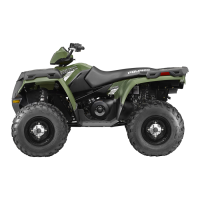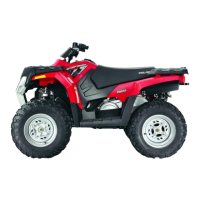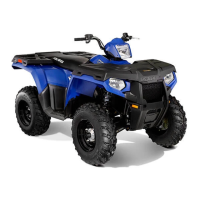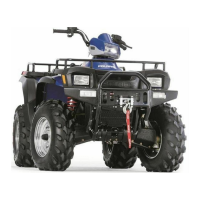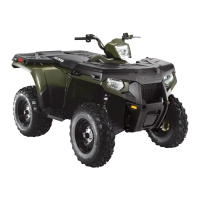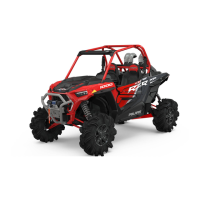MAINTENANCE
2.23
end of the muffler.
3. Use a non-synthetic brush to clean the arrestor screen. A
synthetic brush may melt if components are warm. If
necessary, blow debris from the screen with compressed
air.
4. Inspect the screen for wear and damage. Replace if
necessary.
5. Remove and inspect the gasket. Replace if worn or
damaged.
6. Reinstall the gasket and arrestor.
7. Use a wire brush to clean the arrestor screen. (NOTE: A
synthetic brush may melt if components are warm.) If
necessary, blow debris from the screen with compressed
air.
8. Reinstall the clean out plug and arrestor.
9. Torque screws to 50 in. lbs. (5.6 Nm).
BRAKE SYSTEM INSPECTION
The following checks are recommended to keep the brake
system in good operating condition. Service life of brake
system components depends on operating conditions. Inspect
brakes in accordance with the maintenance schedule and before
each ride.
• Keep fluid level in the master cylinder reservoir to
the indicated level inside reservoir.
• Check the fluid level “eye”. If it is clear, it is an
indication that fluid is needed or the brake pads may
be worn, which can reduce the fluid level.
• Use Polaris DOT 3 or DOT 4 Brake Fluid
• Check brake system for fluid leaks, excessive
travel or spongy feel.
• Check brake pads for wear, damage or looseness.
• Check surface condition of the disc.
• Inspect thickness of brake pad friction material.
BRAKE PAD INSPECTION
Brake pads should be changed when friction material is worn to
.59” (1.5 mm).
HOSE/FITTING INSPECTION
Check brake system hoses and fittings for cracks, deterioration,
abrasion, and leaks.Tighten any loose fittings and replace any
worn or damaged parts.
BRAKE FREEPLAY
Hand Brake Lever
1. Check the brake lever, and foot brake for loose connections,
free play, and damage.
2. Measure the hand brake lever freeplay. Freeplay should be
1
Arrestor
SIGHT GLASS
Front Brake Pads
Brake Pad
Measure
Thickness
Service Limit - .059” (1.5 mm)
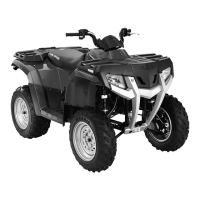
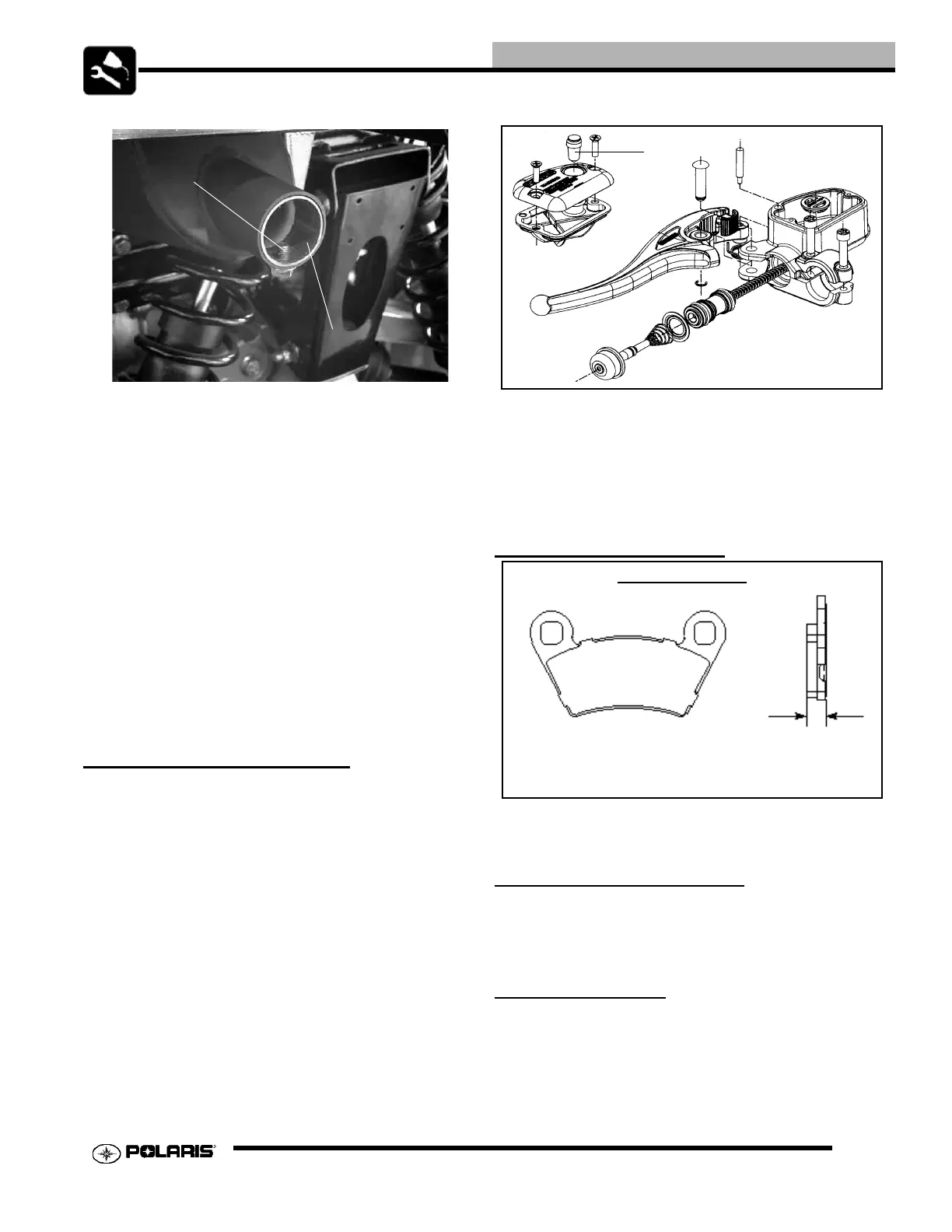